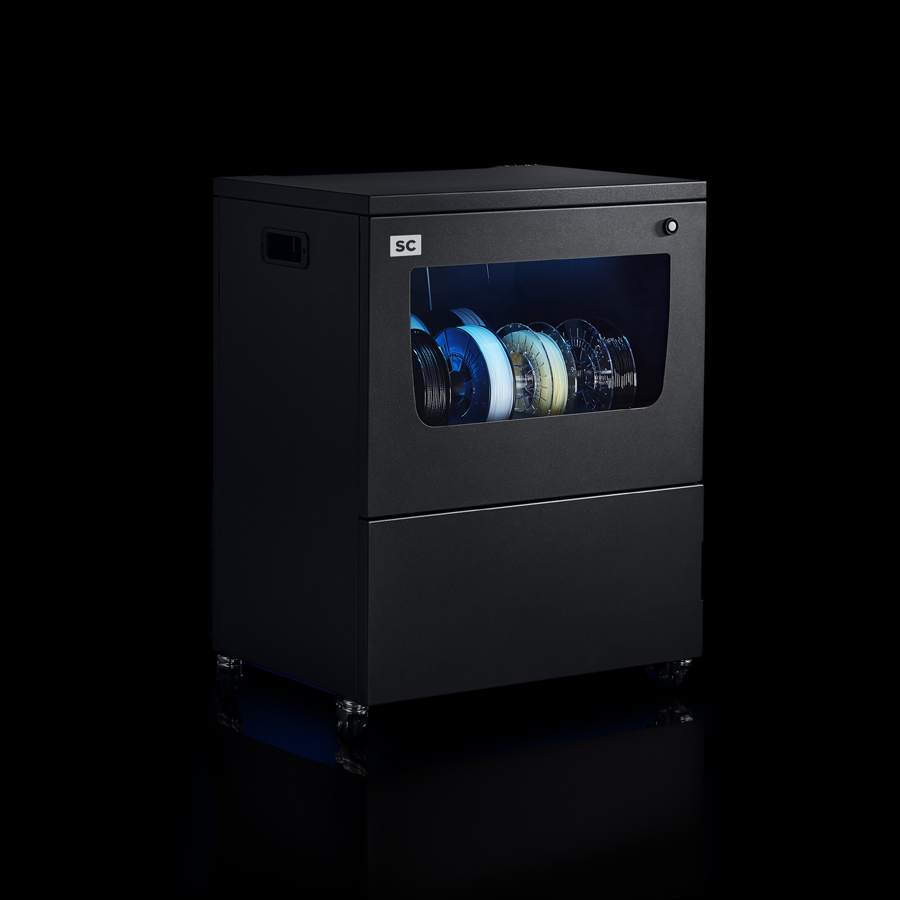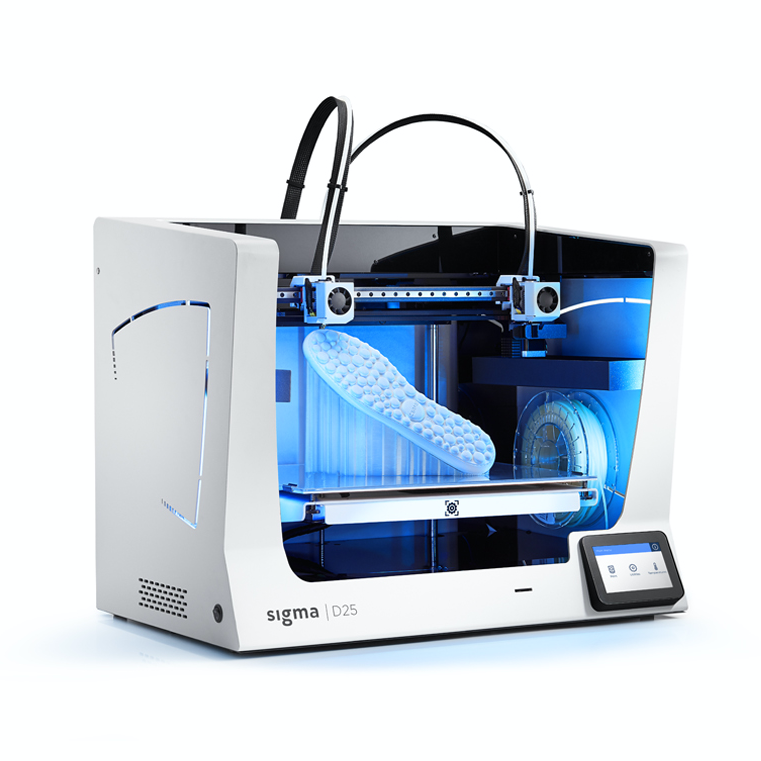Barcelona-based BCN3D is making good use of its capital infusion and launched two new printers, the Epsilon 27 and Sigma D25, as well as a new accessory. BCN3D has a unique focus on the workbench. They essentially came up with the workbench 3D printer segment all by themselves. The idea is that an engineer has a printer for her department or herself that is larger, more robust and more capable than a desktop system, but still less expensive than a high-temperature printer or industrial unit. So, maybe not all the bells and whistles but much more capable than desktop machines. You can’t print PEEK, but you will be able to better print finicky polyamide and other engineering materials.
Now, they round out the Epsilon line, which will have two printers: the already released Epsilon 50 and the newly introduced Epsilon 27. The 27 has 27 liters of build volume (420 mm by 300 mm by 220 mm) and costs €4,995. It features BCN’s independent dual extrusion (IDEX) system, which means that both extruders can print the same or a different part simultaneously. In duplication mode, you can print two of the same models simultaneously, two models symmetrically, print supports or print two different materials. It has a passively heated chamber that is enclosed. The extruders are dual drives by Bondtech. It has HEPA and carbon filters and prints are automatically stopped once you open the door.

Another new product is the Smart Cabinet. This has a humidity control to make sure that your filament doesn’t degrade a UPS. It comes in at a pricy €2,500 and holds up to eight spools. The system works through the use of silica gel and heating. The cabinet also has a tool tray and extra storage. You can get a Smart Cabinet for the W50 and the W27.

The other news is a new Sigma D25 printer. This printer is now the only printer BCN3D offers for the desktop. The machine costs €3,400, has IDEX, and a 420 mm x 300 mm x 200 mm build volume. On the software side, it has over-the-air updates for the printer, as well as wireless printing. It comes with a silicone pad on an aluminum build plate with improved calibration.
The feeder system has been moved to the back of the printer and the printer has a new, stiffer axis system. It also has Bondtech direct drive extruders, which should make flexible materials very easy to print with, and comes with E3D hot ends. Controls are wireless, or operated through a five-inch capacitive touch pad, which I don’t like for people who wear work gloves. The maximum extruder temperature is 300°C and the heated bed can go up to 80°C.

We spoke with BCN3D’s CTO Eric Pallarés about their future recently on the podcast and interviewed him separately, as well. In those interviews, he was adamant about the company’s customer and ecosystem focus. Now, he says of the new products:
“I see it as our job every day to make every aspect of the customer experience better. With the launch of this new portfolio, I strongly believe we have done just that. The new fully integrated product offering means customers can find the quality and productivity they need at the price-point they can afford, making it easier than ever for users around the world to innovate and create faster,”
While CEO Xavier Martínez Faneca says,
“With new integrated solutions in the both the desktop and workbench segments, BCN3D has a range of products that will take the business to a new level. We are also working more closely than ever with an unparalleled network of sales and support partners to ensure the best possible experience for our customers on a local level,”
All in all, we can see BCN3D move more toward the professional market and an integrated ecosystem approach. This is currently where the money is and represents a move toward a higher-end market that will also be able to pay more for services and the like. On the worry side for me, is that now hobbyists and schools will be hard-pressed to buy BCN3D printers—unless, of course, one centralized workbench printer will serve the whole school. Then the workbench approach will let them conquer this market as well.
If not the high ticket will divorce the company from the desktop market. This is often where a lot of the hacking, innovation, and new applications are being discovered. The company should have an entry-level desktop system with a much lower price point to get users in early and let them ‘graduate’ to larger and more expensive printers. This to me is a need.
On the other hand, enterprise printers represent a huge market. Ultimaker is the only one with a solid offering there and they’ve now been joined by BCN3D. The European players seem focused on the enterprise, but perhaps they’re leaving too much air for the fire for the now distant seeming Flashforges and Crealitys of the world.
Subscribe to Our Email Newsletter
Stay up-to-date on all the latest news from the 3D printing industry and receive information and offers from third party vendors.
Print Services
Upload your 3D Models and get them printed quickly and efficiently.
You May Also Like
Nikon SLM Solutions Sells SLM 500 to Primary Weapon Systems to Expand Suppressor Production
Primary Weapons Systems (PWS) is a Boise, Idaho-based manufacturer of suppressors, firearms, and related components. A subsidiary of Vigilant Gear and a sister company to aftermarket Glock slide manufacturer Lone...
3DPOD 261: Tooling and Cooling for AM with Jason Murphy, NXC MFG
Jason Murphy´s NXC MFG (Next Chapter Manufacturing) is not a generalist service; instead, the company specializes in making tooling. Using LPBF and binder jet, the company produces some of the...
HP and Firestorm Labs Form Partnership to Use Multi Jet Fusion 3D Printers in Deployable Factories
HP Inc., maker of a range of additive manufacturing (AM) solutions including the Multi Jet Fusion (MJF) ecosystem, has announced a partnership with Firestorm Labs, a developer of containerized, deployable...
3D Printing News Briefs, July 2, 2025: Copper Alloys, Defense Manufacturing, & More
We’re starting off with metals in today’s 3D Printing News Briefs, as Farsoon has unveiled a large-scale AM solution for copper alloys, and Meltio used its wire-laser metal solution to...
































